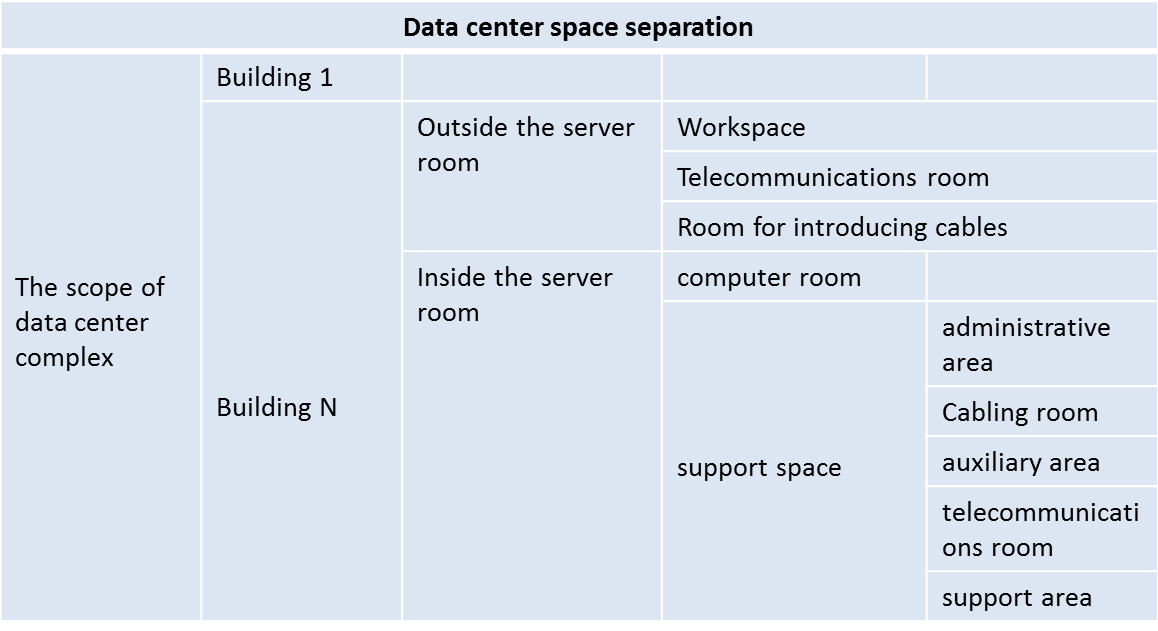- Related articles
- All Cisco MA-SFP-10GB-LR's information (List price, Specs, Datasheet PDF, Compatibility ma
- Optical Transceivers for Cisco SG300-52MP-K9-EU Switch
- The Things You Need to Know about 1000BASE-FX Ethernet Standards
- All Cisco CWDM-SFP10G-1550's information (List price, Specs, Compatibility matrix)
- The difference between SFP and SFP+, XFP, QSFP, GBIC, BIDI
- Optical Transceivers for Cisco WS-C3650-48TQ-E Switch
- Optical Transceivers for Cisco SG200-26FP-UK Switch
- How to Optimize Data Center with Ribbon Fiber Optic Cable?
- Optical Transceivers for Cisco WS-C2960+24LC-L Switch
- What is a single mode fiber?

There are some principles or points that are important for data center system no matter which way you takes to implement cabling in it, especially when you make plans for the data center infrastructures, you should pay extra attention to these points as below.
1. Manageability
Building a high-performance network for users is not complex and costly all the time. Management is the most basic element, without management, the basic cabling network can just deal with the short-term needs of the data center. If it needs to enhance the control and management of the data center infrastructure network, then we must build a structured cabling system to avoid a disordered and unorganized environment comprised of a large number of jumpers and other components that are hard to identify.
2. Flexibility and scalability
The flexibility and scalability of basic cabling allow the efficiency and convenience in the data center without any serious impact on the daily operation, which means to reduce the risk of future use of new application technologies for changes in underlying cabling.
The scalability of the data center is important for the future high bandwidth upgrades of the system and for performance expansion without interruption. It is important to focus on the various system components used to implement the network topology to effectively improve network efficiency, save time and cost.
3. Network efficiency
As the number and size of data centers grow, and as the network evolves and evolves toward 100G Ethernet, the future should continue to grow at high bandwidth. Due to the predictable growth of the data center, the basic cabling network requires a simple and efficient cabling system to maximize the use of space and effectively reduce installation time and cost.
For a well-planned base cabling system, consideration should be given to applications that can support 15 to 20 years and generations of network system equipment and data rate growth.
Data center system
For a complete data center, it contains various types of functional areas. Such as host area, server area, storage area, network area and control room, operator room, test room, equipment room, telecommunications room, into the line, reference room, spare parts room, office, conference room, lounge, etc.
The Data center from the function can be divided into the computer room and other support space. Spatial separation is shown in below table.

From the table above:
1. Outside the building room outside the office area and building floor telecommunications between the building between the lines can be connected through the horizontal cable;
2. The building floor between the telecommunications and building between the line can be connected through the trunk cable;
3. The engine room to support the space of the administrative area, auxiliary area, support area and the incoming support space, the telecommunications can be connected through the trunk cable;
4. Room support space between the line and the building between the line can be connected through the trunk cable;
5. Room support space between telecommunications and building telecommunications, between the line can be connected through the trunk cable;
6. The engine room and support space between the telecommunications, between the lines, can be connected through the trunk cable.
Computer room
The computer room is mainly used for electronic information processing, storage, exchange, and transmission equipment installation, operation and maintenance of the building space, including the server room, network room, storage room and other functional areas, were installed with server equipment (can also be host or small (SAN) and Network Attached Storage (NAS) devices, tape backup systems, network switches, and cabinet / racks, cabling, cabling, and routing.
Support space
It’s the space outside the computer room dedicated to supporting the installation and operation of facilities running in the data center, including incoming lines, telecommunications rooms, administrative areas, auxiliary areas and support areas.





















































